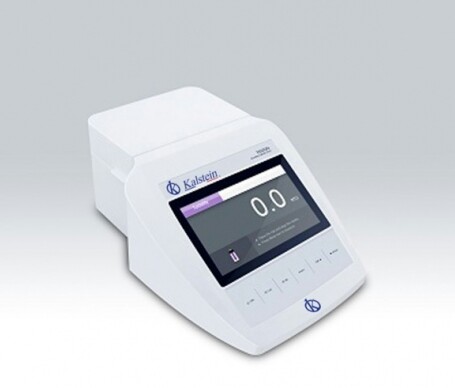Turbidity is the measure of the opacity or cloudiness of a fluid, it is measured by specialized instruments called turbidimeters. It is considered an essential analysis to determine the quality of the water. Turbidity is caused by particles of different sizes that generate an opaque appearance in the sample, and will be greater when there is a higher proportion of undissolved solids in the fluid.
Although it is important to note that turbidity is a measure of the opacity of a liquid. It is not a measure of actual particles in the water.
A turbidimeter is an instrument that allows evaluating how cloudy a fluid is, that is, it determines the turbidity. It achieves this through an optical analysis that allows it to measure the particles in suspension in a dissolved gas or in a liquid. For which it uses a light source and a light detector (a photocell) set at right angles to the original beam.
The photocell is an electronic piece that, when it detects an increase in light, registers a change in its resistance. Depending on how the light source is geometrically arranged, the turbidimeter has different characteristics. Based on the light reflected by the particles towards the photocell, their density is estimated. The properties of particles such as their shape, color and reflectivity.
Turbidity can be estimated with equipment such as a spectrophotometer and a colorimeter, which can measure the decrease in transmitted light due to the blockage generated by the particles. However, these measurements are not considered valid by international regulatory bodies because they do not meet the accepted definition of turbidity.
How does a turbidimeter work?
A tubidimeter is designed to perform field or laboratory measurements, as well as continuous monitoring through the setting of an alarm that activates when unsafe turbidity levels are reached.
A turbidimeter measures suspended particles with a light beam (beam source) and a light detector set at 90° to the original beam. The density of the particles is a function of the light reflected by the particles suspended in the detector. The amount of light reflected for a given particle density depends on particle properties such as shape, color, and reflectivity.
The turbidimeter reveals the rate or ratio of light intensities, measures both the transmission of light intensity and its dispersion. This is of vital importance for liquids with intense colors and for highly turbid samples.
The configuration of the tubidimeter is key to obtaining good performance in turbidity measurements. The turbidity unit used by turbidimeters is the NTU (nephelometric turbidity unit), and they generally have a measurement range that goes from 0 to 2000 NTU in the most sophisticated equipment. The latest technology for turbidity measurement uses a laser to measure light scattering at 90° and 360° around the sample, offering high optical precision, with fast results and greater equipment reliability.
At Kalstein we are MANUFACTURERS of laboratory equipment and we offer you excellent turbidimeters with a wide measurement range, made with the highest technology and at the best PRICES on the market. That’s why we invite you to take a look at the Products menu. HERE


